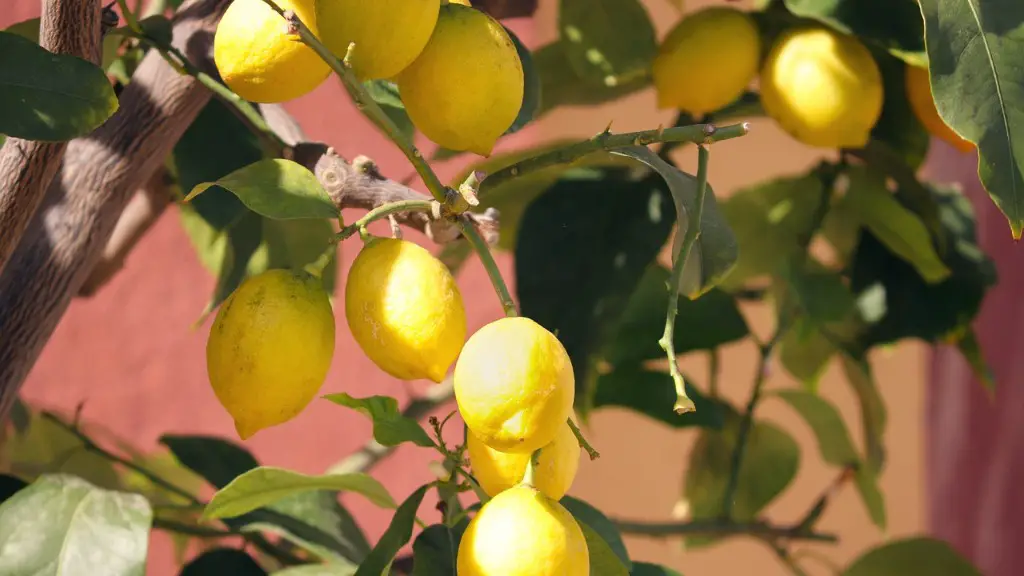Lemon trees are popular trees to grow in gardens, and home orchards. But lemon tree leaves can sometimes curl and this can be due to a range of factors. In this article, we’ll look at why lemon tree leaves curl, as well as how you can prevent this from happening.
First, it’s important to understand what causes the lemon tree leaves to curl and wither. The most common culprit is incorrect watering. If the tree is under-watered, the leaves can start to curl due to lack of water. Overwatering can also have the same effect, with the lemon tree leaves not being able to absorb the water correctly.
Another factor that can cause lemon tree leaves to curl and wither is the soil. If the soil is too acidic or too alkaline, it can also cause the leaves to curl. An easy way to determine the pH level of your soil is to get a soil test. By doing this, you can adjust the soil to the correct pH level, which will help keep your lemon tree leaves from curling.
The temperature also has a role in lemon tree leaf curling. If the weather is too hot or too cold, the leaves can curl and become dehydrated. To prevent this, try to maintain a consistent temperature in the area where your lemon tree is planted.
Nutrient deficiency is another common cause for lemon tree leave curling. If the tree does not receive enough nutrients, the leaves can start to curl and become weak. To prevent this, you should fertilize your lemon tree regularly.
Lastly, it’s important to check for pests. If your lemon tree has aphids or other pests, they can feed on the leaves, causing them to curl. To prevent this, make sure to check for pests regularly and treat your tree with an insecticide if needed.
Preventive Measures
To prevent lemon tree leaves from curling, there are a few simple steps that you can take. Firstly, ensure that your soil is the correct pH level and that your lemon tree is getting enough water. If the weather is too hot or cold, make sure to provide some shelter or shade to keep the temperature consistent. Additionally, make sure to fertilize your lemon tree regularly to ensure that it is receiving the right amount of nutrients. Lastly, check for pests regularly and treat your tree with an insecticide if needed.
Pruning
Pruning is also an effective way to keep your lemon tree leaves from curling. Pruning helps to get rid of any dead or damaged leaves that may be causing the problem. Pruning also gives the lemon tree leaves room to spread which can help them absorb the correct amount of water and nutrients. When pruning, make sure to be cautious and avoid cutting too much as this could cause the lemon tree to become susceptible to pest and disease.
Fungicides
Fungicides can also be a useful tool in keeping your lemon tree leaves from curling. If you believe that fungus might be the cause of the curling leaves, you can apply a fungicide to treat the problem. It’s important to use the right fungicide and to follow the instructions carefully. Overuse of fungicides can be just as damaging as underuse.
Heavy Pruning
In some cases, heavy pruning may be necessary to prevent lemon leaves from curling. Heavy pruning can be done when the tree is in a state of distress or when it’s been over watered. When pruning, you should focus on removing any dead or diseased leaves. This will help the tree recover and limit the chances of the leaves curling again.
Pest Control
Pests can be a major factor when it comes to lemon tree leaves curling. To minimize the impact of pests, you can use a number of techniques. First of all, try to keep the area around your lemon tree clean and free from clutter. This can help reduce the chances of pests being attracted to your tree. You can also try to use natural pest control methods, such as introducing ladybugs or other predatory insects. Finally, certain pesticides can also help to keep the pests at bay.
Root Care
The roots of your lemon tree are very important in keeping the leaves healthy. If there are problems with the roots, it can cause the leaves to curl. To prevent this, make sure that the tree has enough space to spread its roots and that the soil is well-drained. Additionally, avoid over-fertilizing as this can damage the roots and lead to curling leaves.



